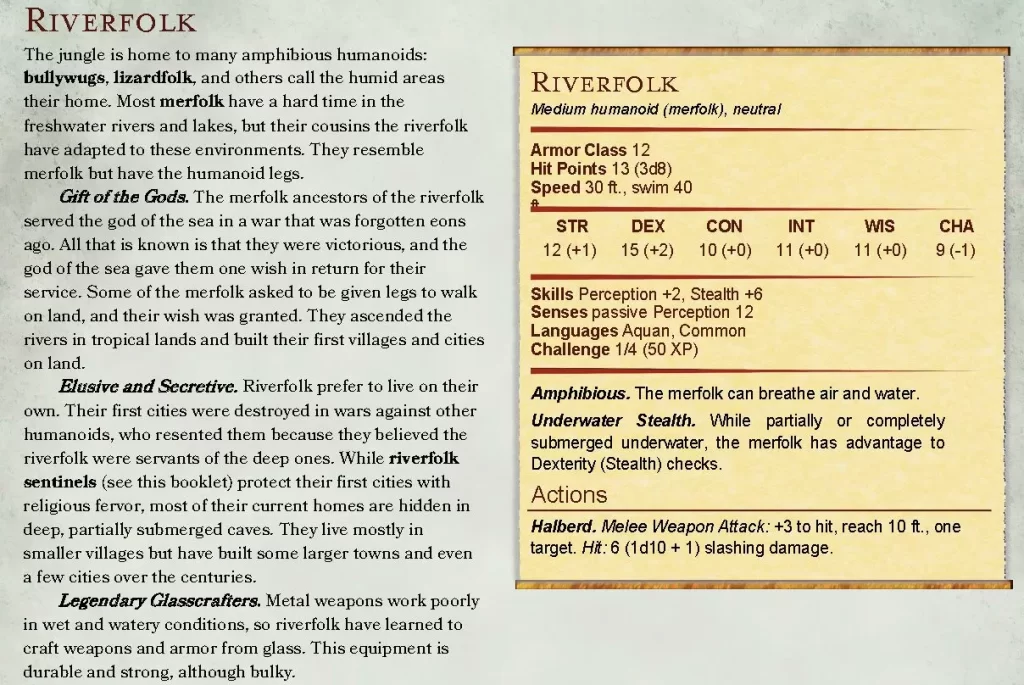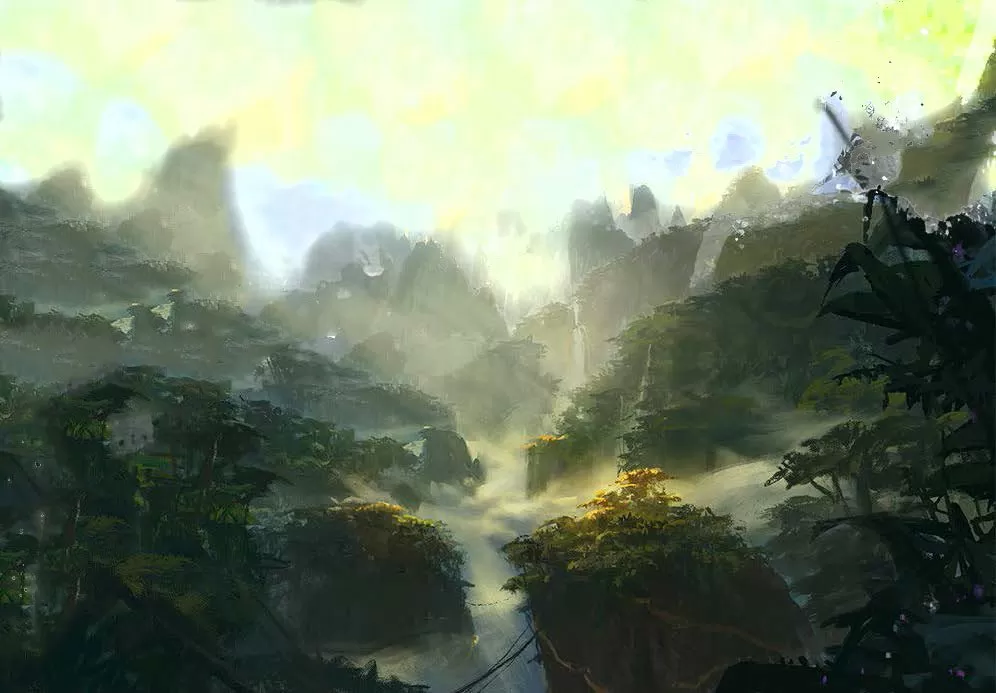
Rainforests form in areas where rainfall is year-round. They are hot, humid, and full of life. They are also dark places where things can be hidden in almost plain sight. High in the treetops, creatures can build their nests well hidden, and abandoned structures are slowly covered in roots, vines, and moss.
Travelling through the rainforest is easier than in the monsoon forest, as the forest floor is covered in a thin, decaying layer of leaves, and not much else. Near the edges of the rainforest, by the rivers and on the edges of clearings, the vegetation is thick and hard to pass through. In these areas, long knives or other hacking tools are very useful, but otherwise travel usually won't be hindered by thick vegetation.
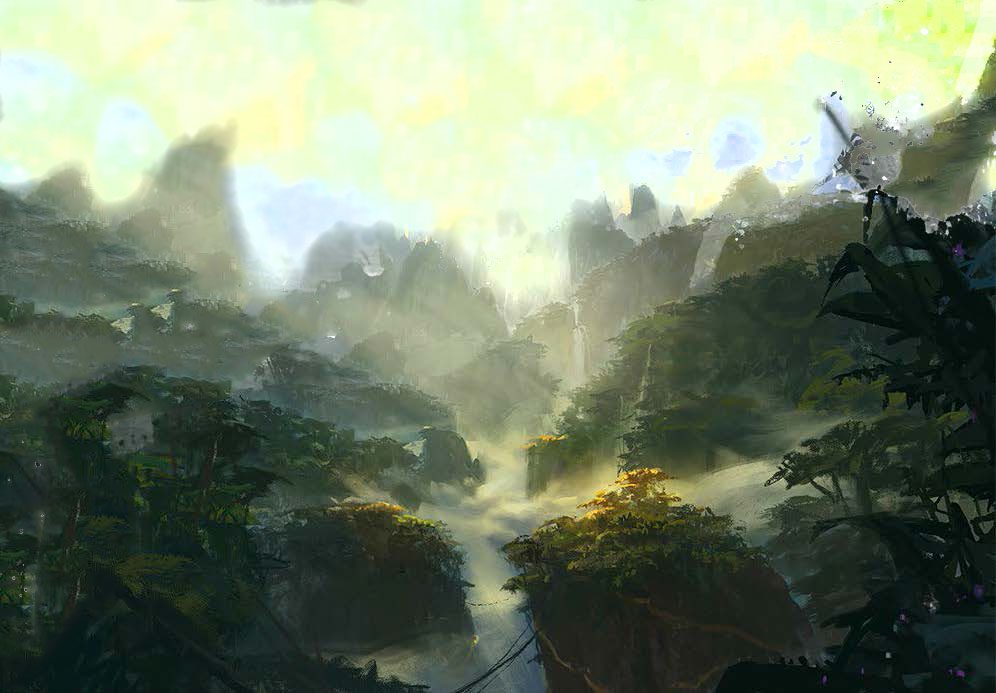
Even though rain is common in these areas, those traversing the forest floor may not be aware of it, because the thick layers of vegetation above deflect and slowly gather much of the rainwater. Trees grow high to gather as much sunlight as possible, and their trunks grow thick to keep the tree from falling in the storms that commonly torment the forest. Many smaller creatures build their lairs up in the canopy, and it is not uncommon for a traveler to miss a lair of goblins altogether as they move under it.
When a storm fell one of the larger trees in the jungle, a light gap emerges. A huge tree, connected to other trees via vines, may pull down a sizeable area of trees down as it crashes down. The area where the light gap forms quickly become an area filled with plants competing for a chance of sunlight. These areas are often full of food, which attracts a lot of herbivores and eventually a lot of carnivores.
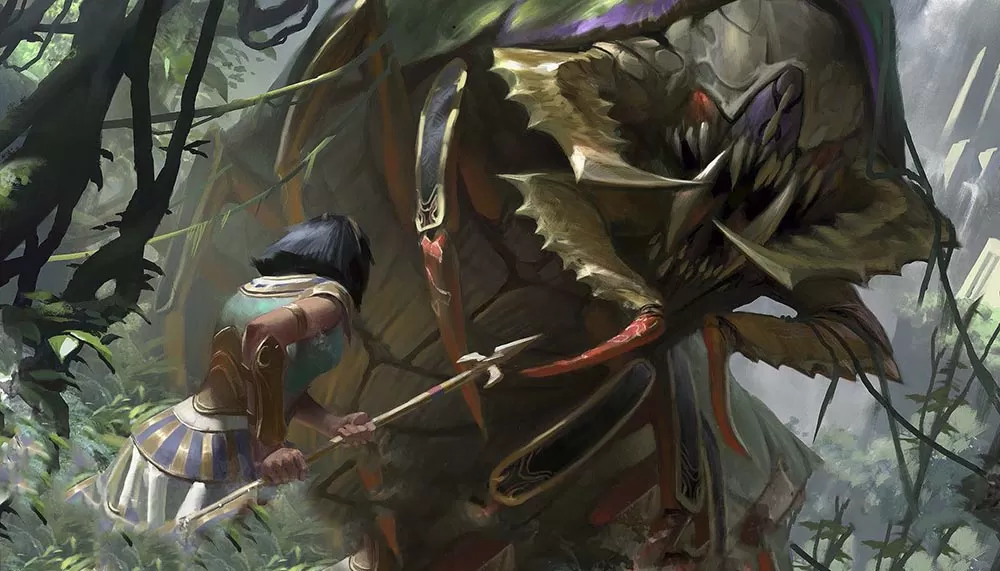
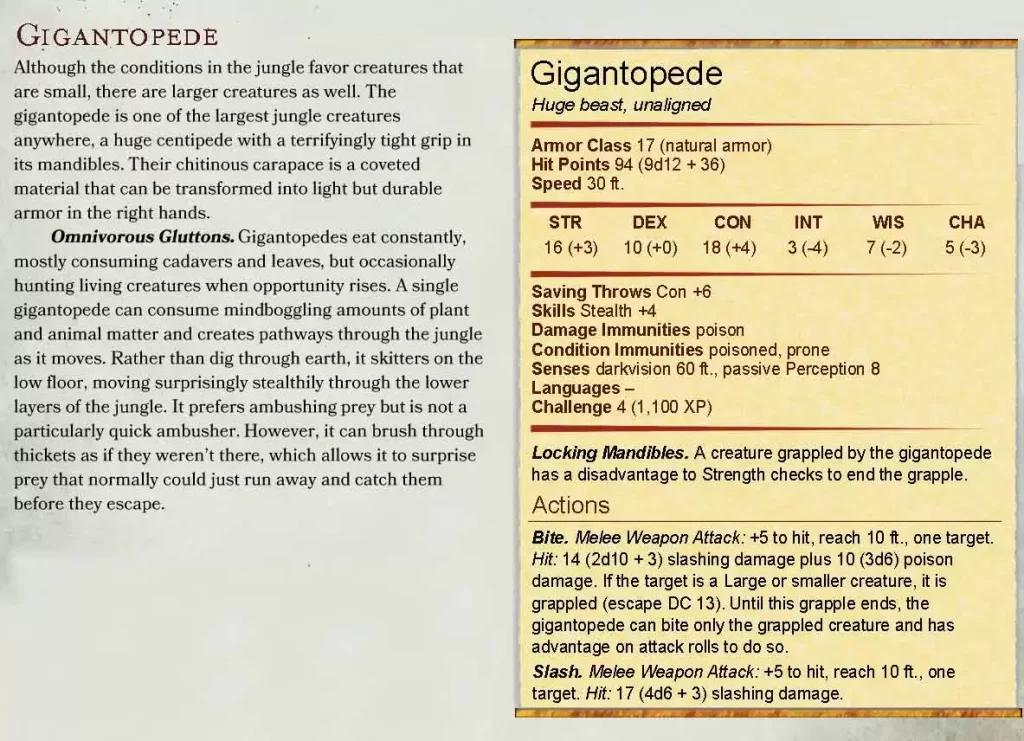
Travelers may feel they've found paradise in the blooming, bright place filled with fruits and flowers, but they should be wary of the creatures that creep in the surrounding area: giant lizards, tigers, panthers, and gigantopedes commonly hunt these areas, although they can be found anywhere in the jungle. Elephants can also create clearings and paths through the jungle.
Up in the understory and in the canopy, the trees are covered with parasitic vines and other plants that may form a full third of the weight of the trees they use for support. Eagles, paragriffons and harpies are commonly seen at the overstory level, in the few trees that pierce the canopy and rise above it. In the understory level, giant spiders, giant poisonous snakes, giant wasps, giant constrictor snakes, and panthers hunt the animals that hide from the bigger carnivores living below.
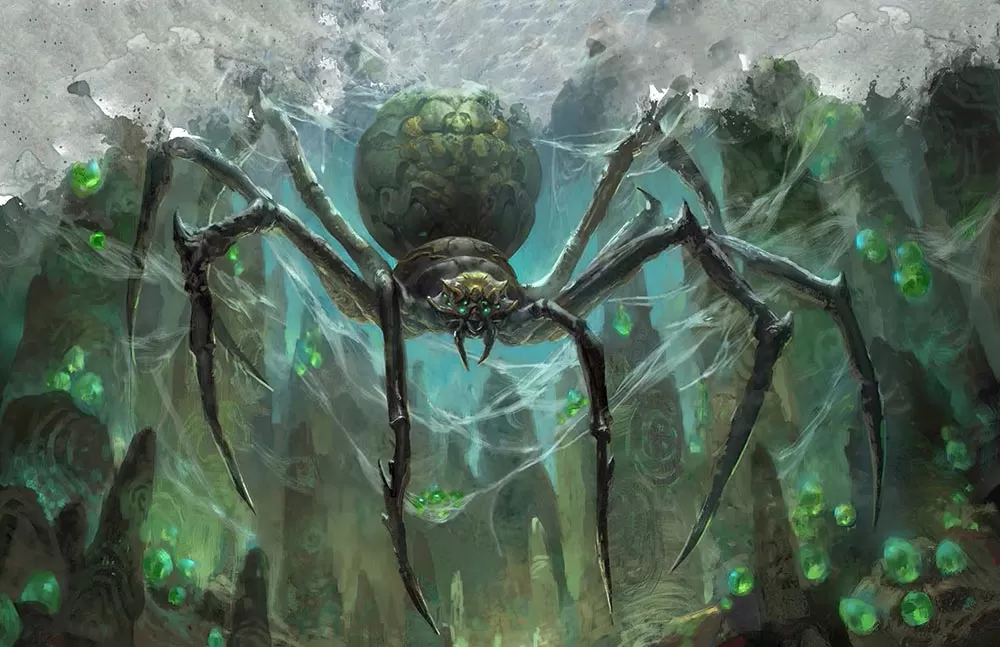
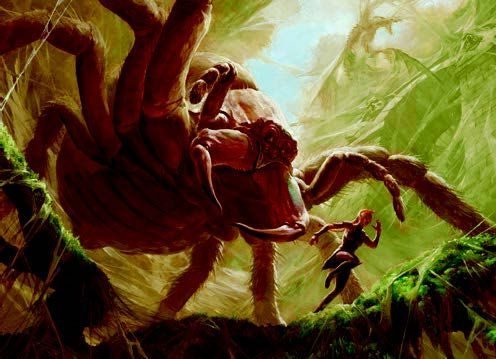
Although many jungles form around river systems, there are some areas where rivers are not large enough to support communities without wells. But if the people are lucky, nature has provided a natural well where drinkable water is plentiful. In these areas, the best source of water comes from unique kinds of sinkholes called cenotes, which connect to a system of underground rivers. Cenotes are collapsed limestone roofs of an underground river or a pond and they provide potable water and a place of refuge for humanoids. Some fish and frogs also may live in the cenote and the underground river system that connects to it, providing food as well.
Where other sources of water are scarce, villages tend to form near or around cenotes, and in areas where clean water sources are difficult to find, people may even fight over the control of abundant cenotes. Most cenotes are small, mere holes in the ground that lead into a larger cave, the bottom of which is covered in clean and clear water. For many, these locations are sacred, and their location is often kept secret.
People may build temples on top of cenotes in some cultures or build ladders or stairs that take water carriers down into the cenote. Some even build their communities inside the cool caves. In some cultures, cenotes are believed to be gateways to the afterlife. The bottoms of sacred cenotes may be full of ritual offerings, thrown into the water as gifts for the dearly departed.
The most notable inhabitants of cenotes are riverfolk, who like to build their villages and towns in suitably large, open sinkholes. While this may lead to conflict, the presence of riverfolk also provides surrounding communities a rare opportunity to trade with underwater folk. If a prominent group of riverfolk live in the underground rivers, terrestrial people are forced to form a peaceful relationship with them: as the riverfolk may appear in any cenote without warning, the people have no choice but to accept their dominion over the freshwater sources. In these situations, riverfolk often demand tribute for the use of their water.
